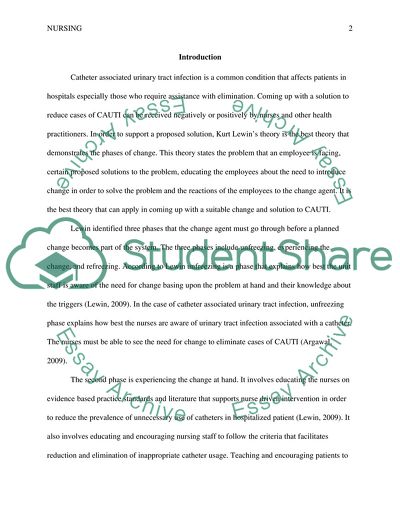Incorporating Theory Essay Example | Topics and Well Written Essays - 500 words. https://studentshare.org/medical-science/1857661-catheter-associated-urinary-tract-infections
Incorporating Theory Essay Example | Topics and Well Written Essays - 500 Words. https://studentshare.org/medical-science/1857661-catheter-associated-urinary-tract-infections.


